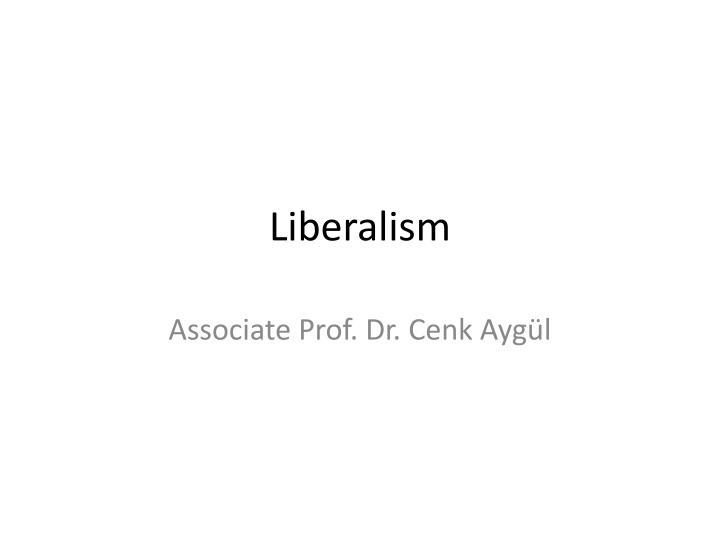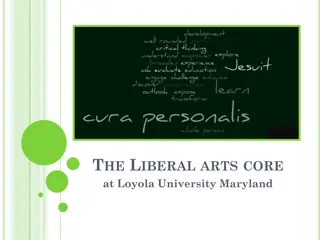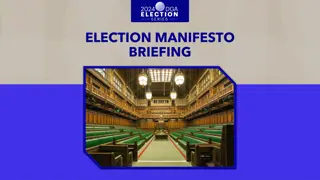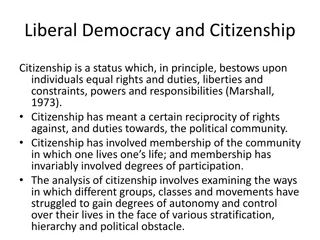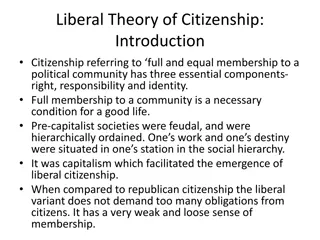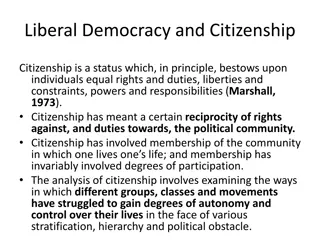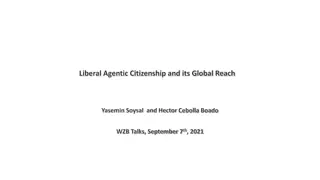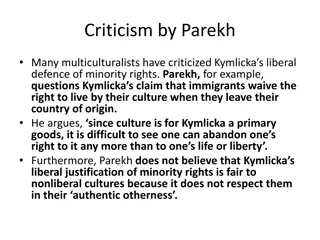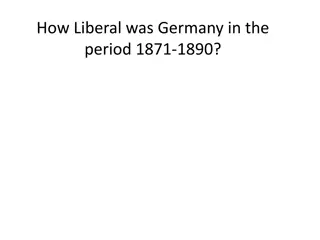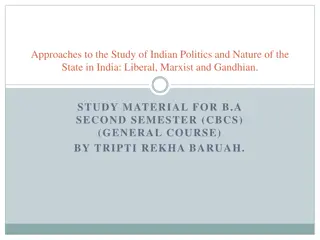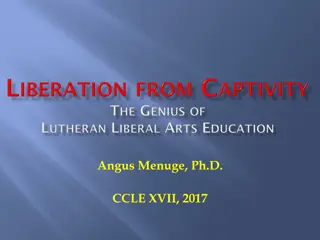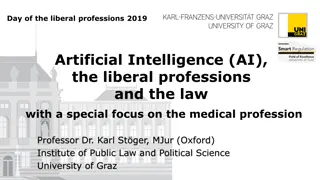Liberal Theses Development and Historical Significance
The development of liberal theses from Kant's idea of perpetual peace to the Briand-Kellogg Pact and the challenges faced during the 1970s. Delve into the main points of liberalism, assumptions, and the impact of US hegemony on organized capitalism. Discover key themes in peace and security studies, including democratic stability thesis and the evolving role of the state in modern times
Download Presentation

Please find below an Image/Link to download the presentation.
The content on the website is provided AS IS for your information and personal use only. It may not be sold, licensed, or shared on other websites without obtaining consent from the author.If you encounter any issues during the download, it is possible that the publisher has removed the file from their server.
You are allowed to download the files provided on this website for personal or commercial use, subject to the condition that they are used lawfully. All files are the property of their respective owners.
The content on the website is provided AS IS for your information and personal use only. It may not be sold, licensed, or shared on other websites without obtaining consent from the author.
E N D
Presentation Transcript
Liberalism Associate Prof. Dr. Cenk Ayg l
Liberalism Early contributions include Kant s idea of perpetual peace. The EU from time to time gives references to Kant s cosmopolitanism. In his work entitled the perpetual peace Kant thinks about how a sustainable peace can be reached. What Kant suggests is not a world government and not even a supra-national authority which the states pool their sovereignty but a loose coalition of states that are rules according to the principle of rule of law (republics).
Ruling out wars! Briand-Kellogg Pact Also called, the General Treaty for the Renunciation of War or World Peace Act. Signed on August 28, 1928. Signatories are: the US, France, the UK, Italy, Japan, Weimar Germany as well as many other countries including Egypt, Ethiopia and Turkey. The major aim was to prohibit war as an instrument of national policy. What did change between 1928 and 1931-36?
1970s 1970s are the years when liberal theses develop. What are the conjunctural characteristics? Oil crises, the end of Bretton Woods system, Detente, the strengthening of the EU vis-a-vis the US.
Main points of liberalism Rationality is the defining universal characteristic of the humans. People pursue their interests but a consensus can be worked out (a positive-sum game, rather than a zero-sum game). Cooperation is the essence of all human interactions, including IR. Government is necessary but centralization of power must be avoided (Paine: the state is a necessary evil!) Individual liberty comes first.
Assumptions Page 53 onwards.
Hegemony of the US leads to organized capitalism? 1944 Dumbarton Oaks Conference=> UN 1944- Bretton Woods => World Bank / IMF
Themes: Peace and Security Studies Michael Doyle: democratic stability thesis Do democracies fight one another?
Themes: The State State is a necessary evil . But is it still possible to go back to the night watchman state of the English industrial revolution in the late 20th century?
Themes: Functionalism EU European Coal and Steel Community, The European Atomic Energy Agency
Themes: Multinational Corporations First modern corporations => East India Company, Hudson Bay Company In the first half of the 20th century, most corporations were dealing with extracting the resources of the 3rd World. After the Second World War, MNCs represented mostly the American-centered global strategies and the first stage was the spread of fordism to Europe. The relative malaise of the American economy can be analyzed with reference to the MNC strategies.
Themes: Identity and community For example: Can there be universal human rights or should there be differing conceptions for different cultures / communities?
Themes: Inequality and Justice North versus South issues
Liberal theorists Kant, Hobbes, Locke, Rousseau, Adam Smith, David Ricardo, Jeremy Bentham, John Stuart Mill, John Maynard Keynes.
